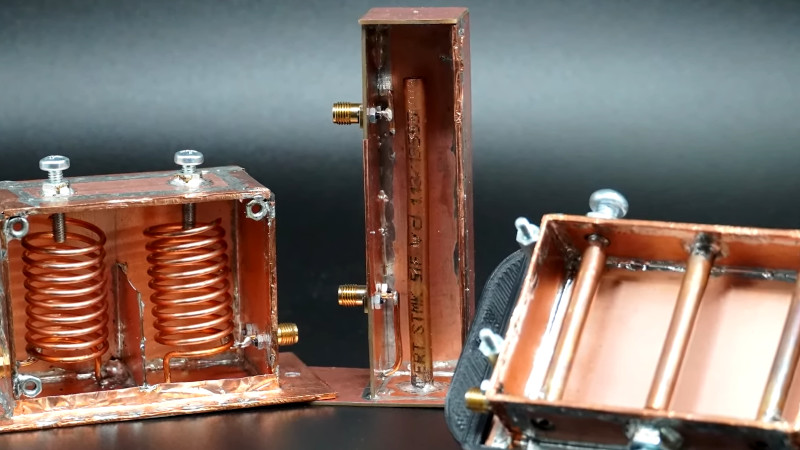Cavity Filters, The Black Art You Have A Chance Of Pursuing [Hackaday]

A tuned circuit formed by a capacitor and an inductor is a familiar enough circuit, and it’s understood that it will resonate at a particular frequency. As that frequency increases, so the size of the capacitor and inductor decrease, and there comes a point at which they can become the characteristic capacitance and inductance of a transmission line. These tuned circuits can be placed in an enclosure, at which they can be designed for an extremely high Q factor, a measure of quality, and thus a very narrow resonant point. They are frequently used as filters for that reason, and [Fesz] is here with a video explaining some of their operation and configurations.
Some of the mathematics behind RF design can be enough to faze any engineer, but he manages to steer a path away from that rabbit hole and explain cavity filters in a way that’s very accessible. We learn how to look at tuned circuits as transmission lines, and the properties of the various different coupling methods. Above all it reveals that making tuned cavities is within reach.
They’re a little rare these days, but there was a time when almost every TV set contained a set of these cavities which were ready-made for experimentation.

![cavity-filters,-the-black-art-you-have-a-chance-of-pursuing-[hackaday]](https://i0.wp.com/upmytech.com/wp-content/uploads/2024/07/193458-cavity-filters-the-black-art-you-have-a-chance-of-pursuing-hackaday.jpg?resize=800%2C445&ssl=1)